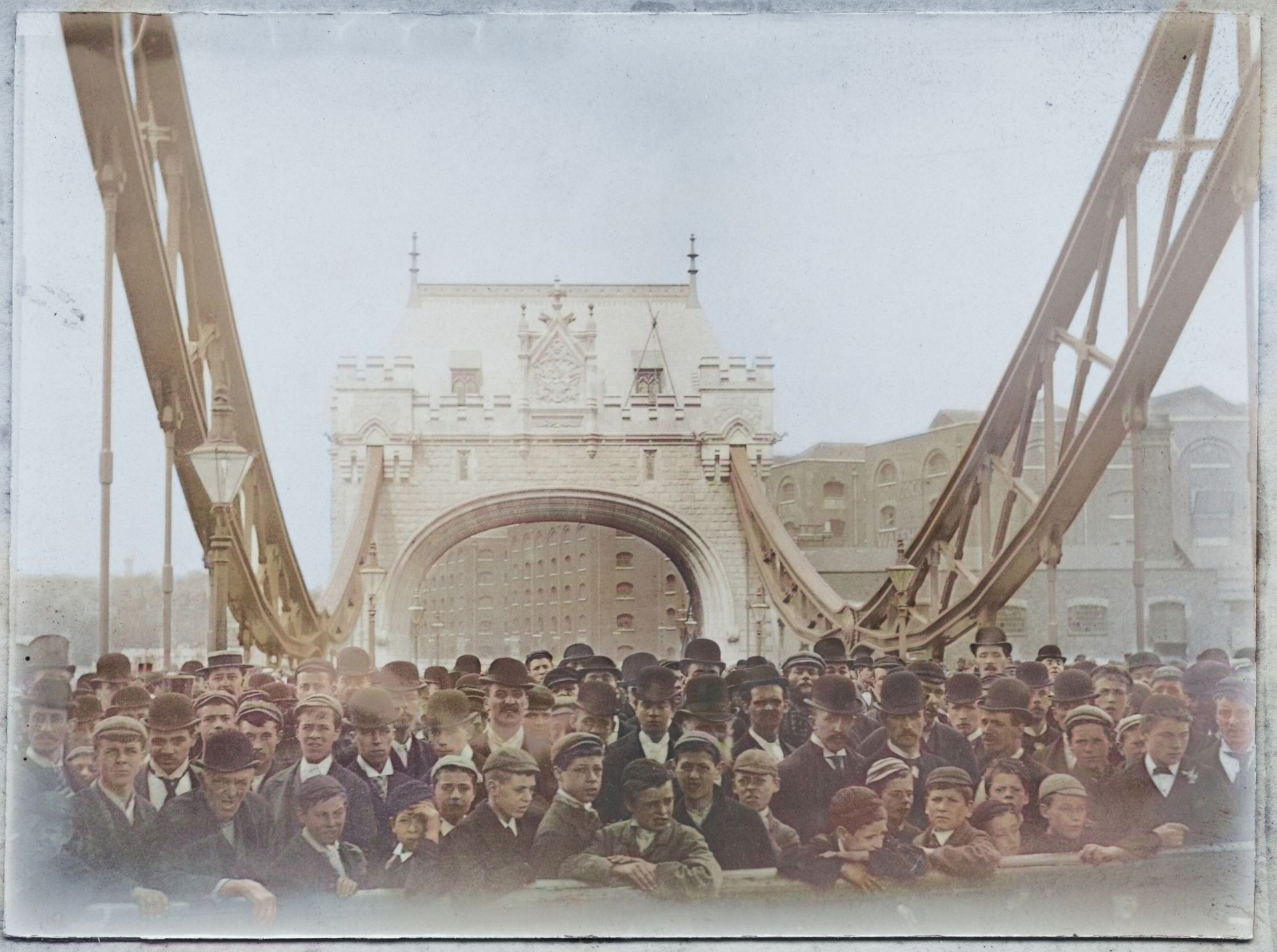Victorian London
We interviewed Art and Cultural Historian Michael I. Ohajuru, who was able to help paint a picture of the diverse society in late 19th century London, at the time Tower Bridge was built.
We interviewed Art and Cultural Historian Michael I. Ohajuru, who was able to help paint a picture of the diverse society in late 19th century London, at the time Tower Bridge was built.
In 1894, Victorian London was at the peak of its industrial and imperial power.
London at that time was a city of stark contrasts. It was the most modern city in the world, powered by innovations like the first coal-fired power station and the world’s first deep-level electric tube line. But a short walk from the grandeur and prosperity of the City and West End, the East End was notorious for its overcrowded slums, where poverty, disease, and crime were rampant.
Tower Bridge
Tower Bridge had just been completed, with its iconic bascules which lifted to let tall ships pass into the Pool of London. The area was filled with steamships and cargo vessels, bringing goods from across the British Empire, including tea, spices, and raw materials.
It symbolised London’s modernity and the Empire’s reach.
While many believe immigration to Britain began with the arrival of HMT Empire Windrush in 1948, migration to London dates back centuries. Roman soldiers, Norman settlers, and Huguenots fleeing persecution in France, all shaped London’s history.
During the 19th century, the Industrial Revolution attracted immigrants from Ireland, Italy, and the Caribbean. Lascars from India, China, and Africa also settled in port cities. The Windrush generation was a significant milestone, marking the beginning of large-scale migration from the Caribbean, but it was part of a much longer story of immigration to Britain.
Life for immigrants was marked by both opportunity and hardship. Many came seeking work, but faced overcrowded housing, low wages, and discrimination. Immigrant groups like Irish workers, Jewish refugees, and African dockworkers lived in cramped tenements in the East End, enduring poor working conditions and exploitation.
Racial discrimination was common, with Black and Asian communities facing segregation and prejudice in both employment and housing. Immigrant communities often relied on each other for support, creating strong, supportive networks through community centres, synagogues, and places like pubs and clubs.
Despite the hardships, these communities contributed significantly to London’s economy and culture.
In the 1890s, several areas of London became known for their immigrant communities.
The East End housed a variety of immigrant populations due to its proximity to the docks, where many newcomers arrived and found work.
Whitechapel and Spitalfields were home to a large Jewish community. They established synagogues, schools, and businesses, especially in the garment industry.
Limehouse in the East End was known for its Chinese community, made up mostly of sailors and traders. It became one of the first Chinatowns in London, with Chinese-owned shops, restaurants, and laundries.
Stepney and Poplar were some areas where Irish immigrants settled. Many Irish migrants had come to London following the Great Famine, and by the 1890s, they formed a significant part of the working-class population, often employed in construction and manual labour.
Canning Town and Silvertown, near the docks, were home to African and South Asian seamen and labourers, including lascars from India and China.

This photograph from the public opening of Tower Bridge noticeably only show white men, despite London’s diverse population at the time.
This may be because of a number of factors:
Immigrant communities often lived in marginalized areas like the East End and were often excluded from mainstream public life, including large public celebrations.
Photography was influenced by the perspectives of the photographers and their patrons. There may have been an intent, conscious or unconscious, to focus on white, middle- and upper-class participants, as they were considered more representative of the ‘respectable’ society at the time.
Additionally, many immigrants worked long hours in low-paid, labour-intensive jobs, leaving them little time to participate in public events such as the opening of Tower Bridge.
As a result, despite London’s diverse demographic, photographs like these may not fully capture the multicultural reality of the city.
In the late 19th century, it was common for individuals from across the British Empire to travel to London for education or work.
London’s prestigious universities, like King’s College and University College London, attracted students from India, Africa, and the Caribbean, offering degrees in medicine, law, and engineering.
Professionals from the colonies came to London seeking career advancement in fields like engineering and law. Though travel was costly, London’s status as a global centre for education and employment made it a key destination for those seeking opportunities from around the world.